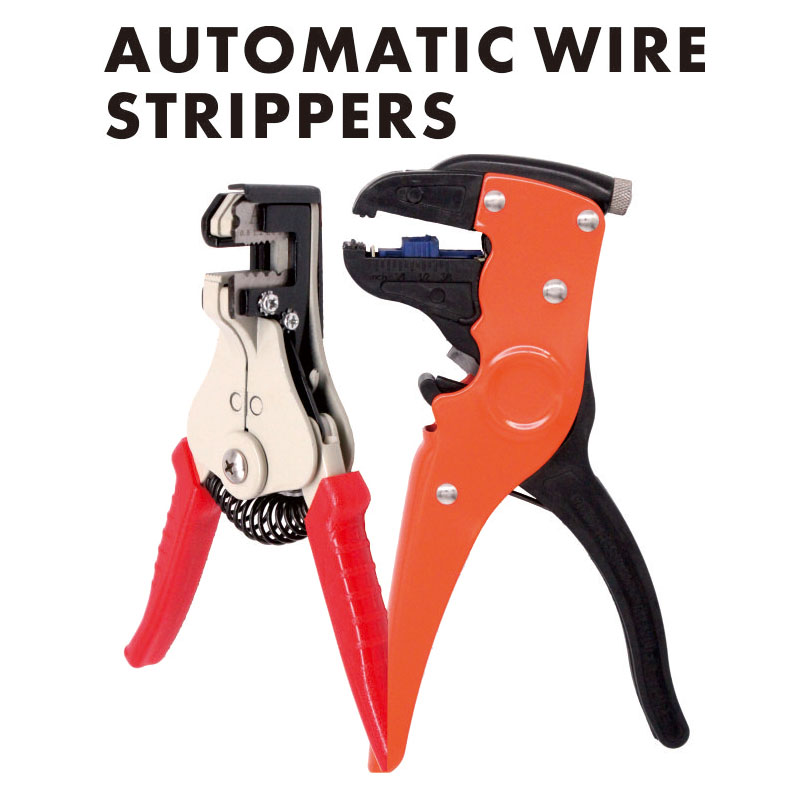Why Is the Handheld Wire Stripping Tool Called the "God's Hand" Of the Master of Electrician Wire Art?
The Handheld Wire Stripping Tool is an indispensable professional tool for electricians, electronic engineers, DIY enthusiasts and cable installers. Its main function is to quickly and accurately strip the outer insulation of the end of the wire without damaging the internal metal conductor (copper wire, etc.). It has the following significant features and applications.
Precise control and protection of conductors: The core of the design lies in its adjustable or preset size blade. Users choose the matching blade according to the diameter of the wire (usually with different specifications). The depth of the V-shaped or semi-circular blade of the wire stripper is precisely calculated to ensure that only the insulation layer is cut, and the internal metal conductor wire is completely preserved without any scratches or cuts. This is the most critical advantage that distinguishes it from ordinary knives.
Efficient and convenient: The operation is extremely simple and fast. Just insert the wire end vertically into the selected blade slot, then hold the handle tightly, and the blade closes to cut the insulation layer. Subsequently or simultaneously (depending on the design), the cut insulation layer can be easily pulled off or pushed out completely by continuing to apply force with the jaws. The whole process takes only a few seconds, greatly improving work efficiency.

Multi-function integration: Although the basic function of the Handheld Wire Stripping Tool is wire stripping, most handheld wire strippers (especially electrician's pliers) are practical tools with integrated multi-functions: Cutters: Used to cut wires and various thin cables. Crimping: Used to crimp connectors (such as pin terminals, bullet terminals, network cable crystal heads, etc.). Stripping coaxial cable layers: Special models can strip different insulation layers and shielding layers of coaxial cables such as TV antennas and network cables (RJ45).
Labor-saving design: The handle designed with the lever principle can effectively amplify the grip, and it is relatively labor-saving even when handling thicker or tougher insulation materials (such as silicone wires and Teflon wires), reducing operator fatigue. The spring-loaded handle ensures automatic pop-up for continuous operation. Safety: The ergonomic insulated handle provides both a comfortable grip and a certain degree of protection against electric shock (professional electrician pliers that meet certification standards such as VDE can provide higher voltage protection), especially in live operating environments (although not recommended) or when there is a risk of accidentally touching live objects. Portable and durable: Small size and light weight, easy to carry and put in a tool bag. High-quality wire strippers are made of tool steel, heat-treated, sharp and strong, and durable.
Main application areas:
Electronic equipment manufacturing and maintenance: Circuit board assembly, component connection line processing, test equipment cable production, etc., it is crucial to accurately strip the insulation layer of various thin wires (such as connecting wires, flat cables).
Electrical installation and maintenance: In power wiring operations in homes, commercial buildings or industrial sites, it is used to strip the wire insulation required for power cords (single-core wires, twisted wires), sockets, switches, and lamp wiring.
Communications and network engineering: When installing telephone lines and network cables (Ethernet cables), it is necessary to strip the outer sheath of the twisted pair and the insulation layer of each inner core wire to crimp the crystal head or dock.
Automotive wiring harness repair and modification: The automotive circuit system is complex. When repairing electrical appliances and adding equipment, it is necessary to accurately strip the insulation of the automotive wires and crimp the terminals.
Audio system and security wiring: Connecting audio equipment, speaker wires, installing cameras, and access control system wiring requires processing the ends of various audio cables, video cables, and signal cables.
Instrument wiring: Industrial control cabinets and laboratory equipment wiring require processing sensor and instrument connection cables.
DIY projects and model making: Any personal manual project involving electricity and wiring, such as robots, model airplanes, and smart home renovations, cannot be separated from wire strippers.
Maintenance matters: Be sure to choose the correct blade size according to the wire diameter and insulation material. Too small will damage the conductor, too large will not be able to strip or low efficiency. Ensure the proper stripping depth during operation. The goal is to only strip the insulation layer without damaging the conductor itself. Clean the blade regularly to keep it sharp. Blunt blades can easily damage wires. Avoid using wire strippers to cut super-hard materials such as steel wire to avoid damaging the blade.
The Handheld Wire Stripping Tool has become a key tool for processing cable ends with its precision, efficiency, safety, versatility and portability. It is widely used in various fields involving wire connections, from fine electronics to industrial power.
 English
English Español
Español  Português
Português  русский
русский  Français
Français  日本語
日本語  Deutsch
Deutsch  tiếng Việt
tiếng Việt  Italiano
Italiano  Nederlands
Nederlands  ภาษาไทย
ภาษาไทย  Polski
Polski  한국어
한국어  Svenska
Svenska  magyar
magyar  Malay
Malay  বাংলা ভাষার
বাংলা ভাষার  Dansk
Dansk  Suomi
Suomi  हिन्दी
हिन्दी 



